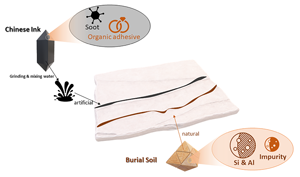No CrossRef data available.
Article contents
Insights into the Residue Trapped in Glaze Cracks of Archaeological Ceramics Using Microchemical Analysis
Published online by Cambridge University Press: 06 September 2022
Abstract

Searching for residue in the glaze of porcelain or stoneware is a difficult task because these glazes are high-fired, well vitrified, and nonporous. This paper analyzes the chemical composition of residue observed in glaze cracks of porcelain via SEM-EDS to determine how the crackle effect was produced, in particular, if it was intentionally created during production or the result of post-depositional processes. This study offers insights to a specific type of ancient Chinese porcelain called “Ge-type ware”, which has two different types of cracks, and whose origin has been debated for nearly 60 years because it has never been found at any kiln site. This paper analyzes the chemical composition of the two crack types, first using elemental mapping to ascertain the different mechanisms that produced these two crack types of the Heirloom Ge ware, and second using residue analysis and chemical fingerprinting to determine the provenance of this puzzling type of porcelain. In doing so, this paper demonstrates how the residue in the glaze of porcelain can be observed and analyzed via microchemical approaches and hopes to inspire more research using this technique in future.
- Type
- Materials Science Applications
- Information
- Copyright
- Copyright © The Author(s), 2022. Published by Cambridge University Press on behalf of the Microscopy Society of America



